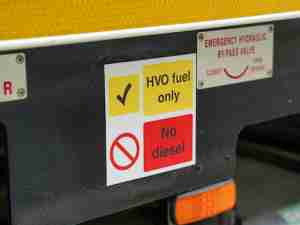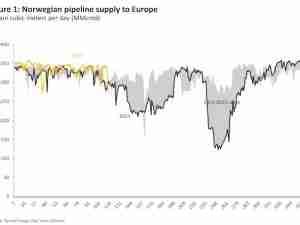The $3.6 Trillion Commodity Bubble That Hinges on Oil: Gadfly
By: | Feb 18 2016 at 10:00 PM | International Trade
Markets rallied this week after it became clear that some of the world’s biggest oil producers were going to curb production to stop prices from dropping any further. The news also buoyed other commodities, from coal to iron ore. Then everything dropped on Thursday with oil.
Before the global financial crisis, a rise in raw-materials prices used to be bad news for the economy and stocks in general. Since central bank easy-money policies took off, that’s become a thing of the past:
One possible explanation is the level of exposure that banks and investors have to the industry. The 5,000 biggest publicly traded companies tracked by Bloomberg in the iron and steel, metals and mining, and energy sectors have a combined $3.6 trillion in debt, according to their most recent financial reports, double what they had at the end of 2008.
Much of the increase is due to money that was borrowed to dig mines and wells whose output, at previous prices, would have easily repaid most maturing bonds and loans. But as commodity prices have tumbled, so has the ability of companies to meet their obligations. The Bloomberg Commodity Index is still only 3.9 percent higher than a 25-year low hit on Jan. 20.
Five years ago, those companies tracked by Bloomberg had more operating income than debt, on average. Now, it would take them more than eight years’ worth of current earnings, without provisioning for interest, taxes, depreciation or amortization, to clear their combined net obligations.
Yield-hungry bond investors sucked up a lot of the debt that was issued and now hold about $2.1 trillion of outstanding notes. They’ll be first to feel the pain considering Standard & Poor’s has already downgraded securities equivalent to 47 percent of that amount and made some 400 negative-ratings moves in the basic materials and energy sectors over the past 12 months alone. Such scale and depth is reminiscent of the way banks were slaughtered by ratings companies during the 2008 financial crisis.
It’s unclear where the other portion of the $3.6 trillion in liabilities lies but probably, most of it is owed to banks. If the remaining $1.5 trillion is indeed on the balance sheets of financial institutions, that would represent about 1.5 percent of the total assets of all the world’s publicly traded banks. That doesn’t seem very significant, or any cause for concern. But to put it in some context, U.S. subprime mortgages represented less than 1 percent of listed banks’ assets at the end of 2007.
Luckily, the debt of commodity companies hasn’t been repackaged into other weird and wonderful securities in the same way American home mortgages were, thus spreading the exposure. But its sheer size, and the fact such a big portion may be held by banks, suggests there’s a huge global risk here.
In countries such as Brazil and Venezuela, the crisis has already reached the man on the street. Should a lender in any developed nation get into trouble because of advances to now-bankrupt commodity houses, the pain would become much more widespread.
For once, sliding commodity prices may actually be bad for the economy. The market is right to cheer any deal that increases the price of oil.
This column does not necessarily reflect the opinion of Bloomberg LP and its owners.
To contact the author of this story: Christopher Langner in Singapore at [email protected].
To contact the editor responsible for this story: Katrina Nicholas at [email protected].
©2016 Bloomberg L.P.










